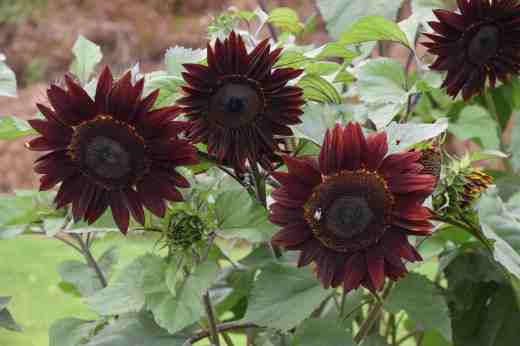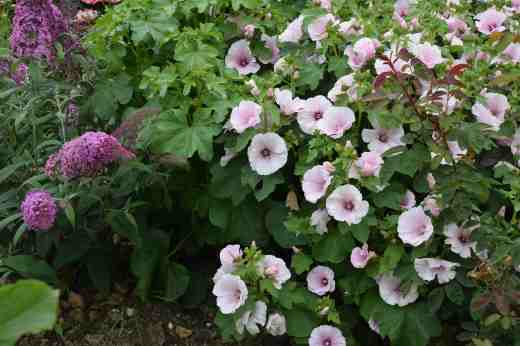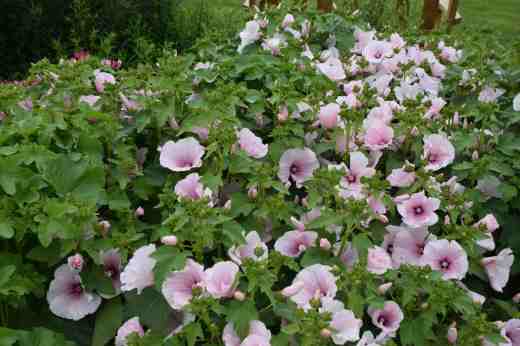Black holes do exist

Last year I grew pale sunflowers and the frilly and delightful ‘Astra Gold’. This year, for a change, I grew ‘Terracotta’, which was supposed to be – well – terracotta. Curiously, there was considerable variation in flower colour, though none were what I would call terracotta. I say ‘curiously’ because, although I didn’t realise it when I ordered them, these are ‘pollenless’ hybrids so should be pretty uniform. I would not usually select pollenless varieties, bred specifically as cut flowers so they don’t make a mess of your table, because I regard sunflowers as something to attract wildlife. Bees do seem to visit the flowers, though they are hard to spot.
The majority of the flowers are dark, very dark. From a distance, a row I planted, looks like a scene from Star Trek with black holes punched into an expanse of green. The plants are good; they are almost 2m high and are very well branched and there are lots of flowers open and lots more to come. But I would hardly call them showy. I suppose they would look smart against a white wall but next year my sunflowers will be sunny.
In complete contrast, annual lavatera ‘Pink Blush’ makes me smile. Like the sunflowers, these were grown in cell trays and planted out in late June. Lavatera is best sown where it is bloom but I sowed in a tray, transplanted into cell trays and then planted out. They tend to have rather thick, sparse roots. This makes transplanting rather tricky. You need to plant them out when small, so they do not receive a check to growth but the roots always seem a week behind the leaves in development so the soil falls off the roots as you transplant them. It makes the job tricky and you need to treat them with care and water them in immediately.

Lavatera are rewarding annuals, big and bulky and with showy flowers, though sometimes a little hidden by the foliage. They are wonderful for filling large gaps in borders and they grow quickly. Unlike cosmos, which I would put on a par for value for money, lavatera do not try to bloom early, slowing their increase in bulk. Lavatera quickly make lush, green mounds, 60cm high, and, when they decide they are ready, they start to open a few flowers, the number doubling daily so that, within a week, the plants are covered in bloom. The pink ‘Silver Cup’ is the standard variety and there doesn’t seem to be a lot of work being done with lavatera but ‘Pink Blush’ is common and has lovely blooms, almost 10cm across, more usually 8cm, deep pink in the centre, fading to almost white at the edges.

As I have nowhere to raise seedlings I really wish one could buy a selection of nice annuals. I could badly do with a few to plant in gaps at the moment! I can usually get Cosmos and order in advance. A little variety would be nice.